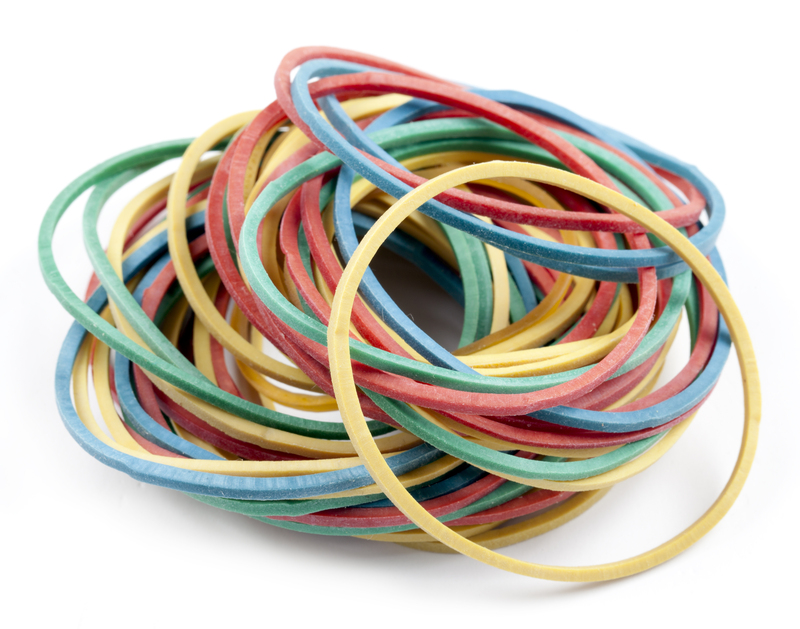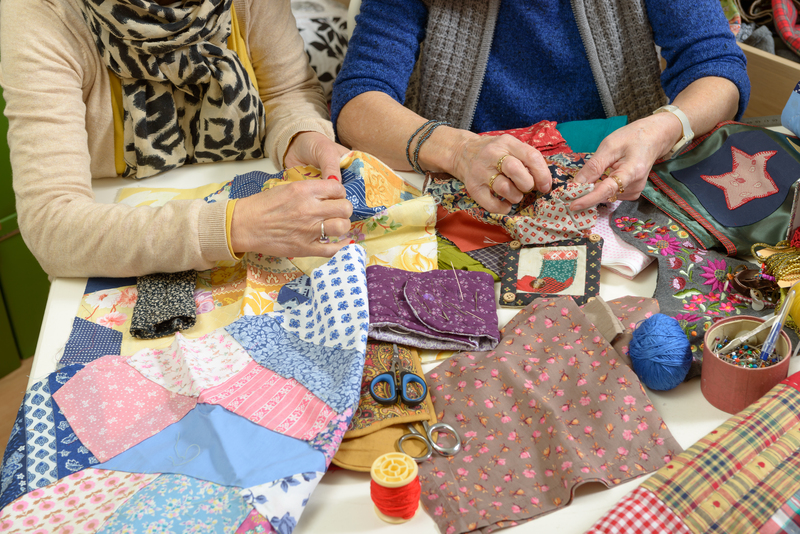Reimagine Waste: Practical Tips to Reduce Plastic
Plastic waste has become one of the most pressing environmental issues of our time. The convenience of plastic has come at a high cost for the planet, polluting our oceans, clogging landfills, and endangering wildlife. However, we can take effective steps to reimagine waste and adopt a more sustainable lifestyle. In this article, we'll explore comprehensive, practical strategies to reduce plastic, why it's vital, and introduce solutions for homes, businesses, and communities.

Why Reducing Plastic Waste Matters
Before we dive into actionable plastic reduction tips, it's crucial to understand the impacts of plastic pollution. According to National Geographic, more than 8 million tons of plastic end up in our oceans each year. These plastics never really disappear; instead, they break down into microplastics, infiltrating our food chain and harming marine life. By choosing to reimagine waste, we are not only keeping our surroundings clean but also ensuring a healthier future for generations to come.
The Environmental Toll
- Wildlife Threat: Animals mistake plastic debris for food, which leads to injury and death.
- Ocean Pollution: Single-use plastics contribute heavily to the Great Pacific Garbage Patch.
- Soil Contamination: Plastics leach harmful chemicals into the earth as they degrade.
By learning how to cut down on plastic, we can significantly reduce these dangers.
Pillars of Plastic Reduction: Rethink, Refuse, Replace, Recycle
Reimagining waste begins with understanding the core principles behind plastic reduction:
- Rethink: Reflect on your plastic consumption patterns and environmental impact.
- Refuse: Say no to single-use plastics wherever possible.
- Replace: Swap out plastics for sustainable alternatives like glass, bamboo, and metals.
- Recycle: Commit to recycling programs and learn proper sorting techniques.
Let's look closer at how you can apply these in your daily life with our top practical tips to reduce plastics.
Essential Tips to Reduce Plastic Waste at Home
1. Opt for Reusable Bags
Plastic bags are a leading cause of pollution. Instead, carry cloth, canvas, or jute tote bags every time you shop. Keep a few bags in your car or backpack so you're never caught off guard. Many stores now offer reusable bags at checkout as well.
2. Go for Bulk and Buy Loose Produce
When you buy foods like grains, nuts, and snacks in bulk, you use fewer packages. Skip fruits and vegetables wrapped in plastic--choose loose produce and place them directly in your shopping cart or use reusable produce bags.
3. Reimagine Your Kitchen
The kitchen is often a hotspot for single-use plastics. Here's how to minimize them:
- Swap cling wrap for beeswax wraps or silicone lids.
- Use glass containers for leftovers instead of plastic ones.
- Opt for refillable spice jars and bulk pantry goods.
- Invest in quality stainless steel or bamboo utensils rather than disposable cutlery.
4. Choose Reusable Water Bottles and Mugs
Disposable water bottles are among the biggest sources of plastic waste. Invest in a stainless steel or BPA-free reusable bottle. Likewise, bring your own coffee mug to cafes to avoid plastic-lined paper cups.
5. Eliminate Plastic in Personal Care
Personal care items are often hidden culprits in plastic waste. Consider these swaps:
- Use a bamboo toothbrush instead of a plastic one.
- Switch to solid bar soaps & shampoos that are packaging-free.
- Buy products in glass jars or metal tins, or look for refill stations.
6. Compost Organics
Composting not only reduces the amount of trash you send to landfill but also cuts down on the need for plastic garbage bags. Start a compost bin for your kitchen scraps and garden waste.
Plastic Reduction Strategies for Businesses
Businesses have an essential role in redefining waste. Here's how companies can make an impact:
1. Audit Single-Use Plastics
Start by identifying where plastics are used. Replace water dispensers and disposable cups with water bottle refill stations. Provide staff with branded reusable water bottles and mugs.
2. Switch to Sustainable Packaging
If you're in retail or food service, consider compostable, recyclable, or biodegradable packaging options. Encourage suppliers to deliver goods in minimal or reusable packaging.
3. Set Up a Recycling Station
Make it easy for employees and customers to recycle correctly by providing clearly labeled bins and educational posters. Make sure the recyclables are regularly picked up and processed correctly.
4. Promote a Plastic-Free Workplace Culture
Offer workshops and resources on plastic reduction. Recognize employees who suggest innovative waste-reduction ideas. Reimagining waste can be a powerful team-building activity as you move toward a plastic-free workplace.
Reimagine Waste in Schools and Community Settings
Schools and communities can be powerful drivers of change. Teaching students and community members to reduce plastic use can lead to broader social impacts.
1. Launch Plastic-Free Campaigns
Organize challenges to encourage students and residents to ditch single-use plastics for a week or a month. Hold workshops to teach eco-friendly habits and provide tools like reusable bottles and bags.
2. Encourage Eco-Friendly School Lunches
Promote the use of reusable lunch containers and cutlery. Ask parents and students to avoid foods packed in plastic and provide guidance on preparing zero-waste meals.
3. Implement School Recycling Programs
Set up proper recycling bins in visible locations and teach students what can and can't be recycled. Engage them with creative projects using upcycled materials.
Creative Ways to Upcycle and Reuse Plastics
Sometimes it's hard to go entirely plastic free, but you can still give plastic waste a new life by upcycling:
- Make planters from old bottles or containers.
- Create DIY storage solutions using jars and tubs.
- Turn plastic bags into woven baskets or mats--there are many guides online for these crafty projects.
- Donate containers to schools or art centers for creative use.
Shopping Smarter: Choose Products with Less Packaging
Companies are responding to customer demands for less plastic. Support brands committed to zero-waste packaging. Use your purchasing power to promote sustainable alternatives.
How to Spot Eco-Friendly Packaging
- Look for minimal packaging and designs that avoid unnecessary wrapping.
- Prefer compostable, recycled, or recyclable materials over plastic.
- Look for refills or bulk offerings that allow you to reuse containers.
Say No to Freebies
Promotional items, free samples, and giveaway plastics contribute to waste. Politely refuse such items unless necessary--your small action encourages companies to rethink their approach.
Get Involved: Advocate for Policies That Reduce Plastic
Addressing plastic pollution isn't solely a personal responsibility--it also requires systemic change. Support legislation that limits single-use plastics, invests in better recycling infrastructure, or encourages innovation in packaging.
Ways to Advocate
- Join local clean-up events to raise awareness about plastic waste.
- Contact local representatives to support anti-plastic policies.
- Support organizations working to clean up oceans and promote recycling initiatives.
Your voice matters and contributes to creating lasting change beyond your household or business.
Benefits of Minimizing Plastic Waste
- Environmental Health: Reduced pollution and protection for wildlife and marine ecosystems.
- Personal Health: Fewer plastics in contact with your food and drink reduces exposure to potentially harmful chemicals like BPA and phthalates.
- Economic Savings: Reusables can save you money over time by eliminating the need to buy single-use items.
- Community Pride: Cleaner neighborhoods, parks, and communal spaces benefit everyone.
Overcoming Challenges in Reducing Plastic Waste
Transitioning to a low-plastic lifestyle isn't always easy. Some barriers include convenience, higher upfront costs for sustainable products, and limited access to alternatives in certain areas. Here's how to tackle these issues:
- Plan ahead: Remember to pack bags, bottles, and containers before leaving home.
- Start small: Begin with simple swaps like reusable water bottles, then gradually replace more items.
- Collaborate: Join or form local groups to share resources and swap sustainable products.
- DIY: Make your own cleaners or personal-care products using natural ingredients and reusable containers.

Inspiring Success Stories: Communities Reimagining Waste
Across the globe, communities are coming together to dramatically cut plastic waste. For example:
- Kamikatsu, Japan: The "zero waste" town sorts waste into 45 categories and has eliminated single-use plastics in many public spaces.
- San Francisco, USA: The city has banned plastic straws and retail bags, resulting in dramatic reductions in landfill waste.
- Bali, Indonesia: Youth-led organizations have pushed for regulations against plastic bags, leading to cleaner beaches and waters.
These examples show that change is possible when communities reimagine waste together.
Conclusion: Your Role in Reimagining Waste
Reimagining waste to reduce plastic starts with each of us. Every conscious decision--from refusing a plastic straw to advocating for new policies--brings us closer to a cleaner, healthier planet.
Remember, progress, not perfection, is the goal. Whether you're making small swaps in your home, leading change in your workplace, or inspiring your community, every action counts. Together, let's rethink, refuse, replace, and recycle to create a plastic-free world.
Ready to start your journey? Share this article to inspire others and be part of the solution!
Keywords: reimagine waste, reduce plastic, practical tips to reduce plastics, reduce plastic waste, minimize plastic waste, alternative to plastic, plastic reduction strategies, zero-waste, upcycle plastics